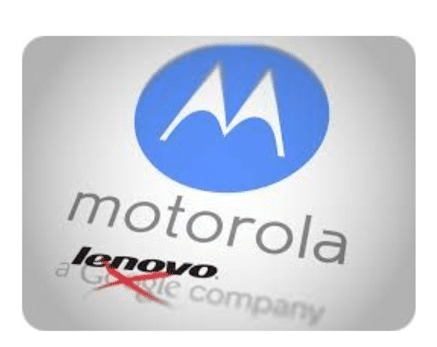Lenovo has agreed to acquire Motorola Mobility from Google for USD $2.91 billion. This comes as a bit of a shock because in 2011, Google acquired Motorola Mobility for USD $12.5 billion. It’s not surprising that Google has decided to divest itself of the handset business, which did not sit well with its many Android device OEM partners; however, even with Google retaining the Motorola patents, it seems a paltry sum for the once-mighty Motorola phone business. By way of comparison, Google spent USD $3.2 billion on digital thermostat maker, Nest, earlier this month.

According to the companies, Lenovo will acquire the Motorola handset business for USD $660 million in cash, USD $750 million in Lenovo ordinary shares, and another USD $1.5 billion in the form of a three-year promissory note. Google will also keep Motorola’s Advanced Technology and Projects group led by former DARPA director Regina Dugan. Lenovo will license the rights to 2000 patents from Google.
This is an important deal for Lenovo, because it positions the company as a truly global handset maker by significantly expanding its presence in North America. Lenovo has stated that it expects to sell 100 million smartphones globally this year. It shipped approximately 45 million smartphones in 2013.
Google made no secret of the fact that its original interest in acquiring Motorola Mobility was its patent portfolio. (Google acquired approximately 17,000 mobility patents.) It has never been particularly clear what those patents were worth, but Apple’s aggressiveness in bringing lawsuits globally against Android device manufacturers gave Google reasonable concern regarding the need for better IP protection. The irony of course is that it became an Android device manufacturer as a result of acquiring Motorola’s handset business, in addition to its mobile patents.
So far, the patents have not demonstrated much value, for example, Google has not been able to generate much revenue enforcing the patents. (See, for example, the recent Microsoft vs. Motorola ruling.)
As a business, Motorola has been a loser for Google since its acquisition. The handset business has lost hundreds of millions each quarter since it was purchased (more than USD $1 billion all told), and Google has laid off nearly 30 percent of the Motorola workforce since it acquired the company. Given that Google had previously sold off Motorola’s set-top box business for more than USD $2 billion, it is probably a safe bet to assume that Google lost around USD $7 billion related to Motorola Mobility. However, while this would be an existential disaster for most businesses, it is more like a speed bump for Google. Indeed, it is good to be rich. And Google is by any measure rich; but it isn’t stupid. What motivated the company to unload Motorola now? The answer is probably Samsung.
Samsung is, of course, by far the largest Android device OEM. A big part of Google’s strategy with respect to Android, of course, is that it provides a platform for Google apps. Remember, Google doesn’t charge device OEMs to license Android, but it does expect its apps to run on all Android devices. Samsung has been increasingly distancing itself from Google apps for Android and has gone as far as to build Samsung Hub, an app store, as well as a browser, email system, messaging service, and other core apps. Recent press reports, however, claim that the companies are working to bring “Samsung’s view of Android in line with Google’s own”.
So, what kind of incentive could Google possibly offer Samsung in order for it to agree to dial back some of its Android customization, which would clearly reduce Samsung’s market differentiation? I think we now have a pretty good idea – it might have just cost Google USD $7 billion.
